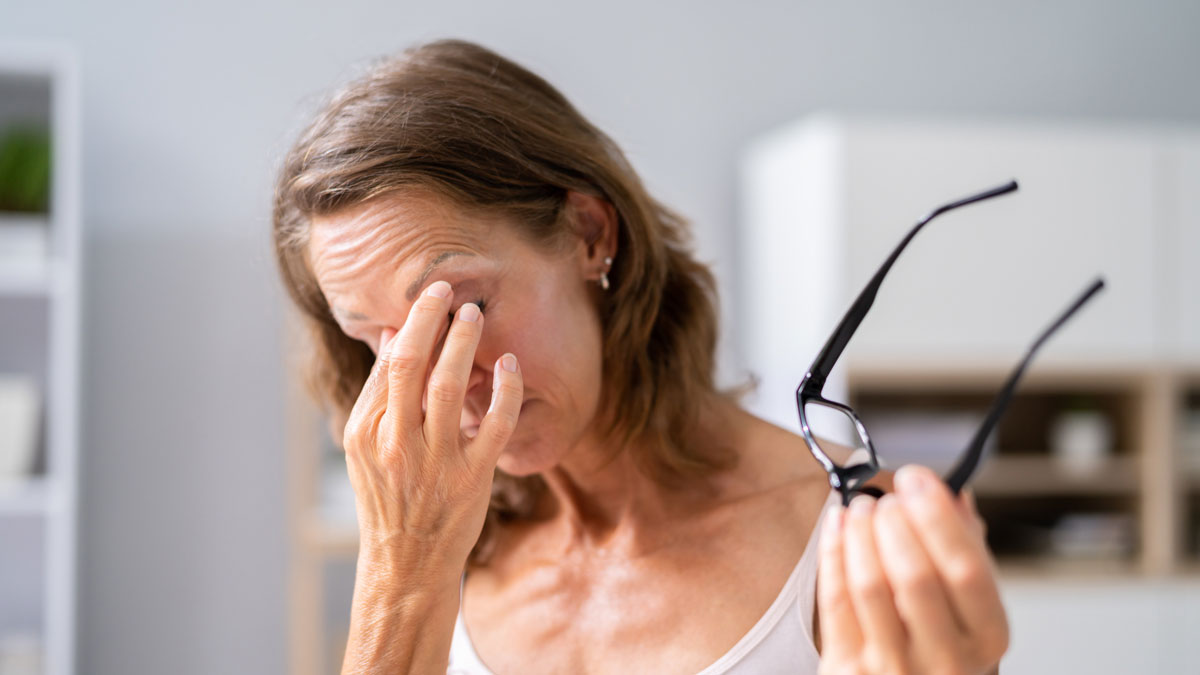
Dry Eye Syndrome: Causes, Relief, and When to See a Specialist
If you’ve ever experienced a burning or gritty sensation in your eyes, or felt like something was constantly stuck under your eyelid, you may be one of the millions of people affected by Dry Eye Syndrome. While it may seem like a minor annoyance, untreated dry eye can lead to discomfort, visual disturbances, and even long-term damage to the surface of your eyes.
In this post, we’ll break down what causes dry eye, how to relieve symptoms at home, and when it’s time to seek expert care from a trusted eye specialist like the team at St. Paul Eye Clinic.
What Is Dry Eye Syndrome?
Dry Eye Syndrome, also called dry eye disease or keratoconjunctivitis sicca, occurs when your eyes don’t produce enough tears—or the right kind of tears—to stay properly lubricated. Tears are essential for maintaining eye health, washing away debris, and keeping your vision clear. When tear production is out of balance, it can result in chronic dryness, inflammation, and irritation.
According to the National Eye Institute, dry eye affects nearly 16 million Americans, and is more common in women and older adults. However, anyone can experience it—especially in today’s screen-heavy, air-conditioned environments.
What Causes Dry Eye?
Dry eye can be caused by either decreased tear production, increased tear evaporation, or both. Common triggers and contributing factors include:
Aging
Tear production naturally declines with age. Individuals over 50 are more likely to develop dry eye, particularly postmenopausal women due to hormonal changes.
Excessive Screen Time
When we use digital devices, we blink less—reducing tear spread across the eye. Long periods in front of a screen can dry out the surface of the eye quickly.
Medical Conditions
Conditions like autoimmune diseases (e.g., Sjögren’s syndrome, rheumatoid arthritis, lupus), diabetes, and thyroid disorders are linked to chronic dry eye. Medications Some common medications can reduce tear production, including:
- Antihistamines
- Antidepressants
- Decongestants
- Blood pressure medications
- Hormone replacement therapy
Environmental Factors
Exposure to dry air, wind, smoke, or air conditioning can increase tear evaporation. Seasonal allergies can also worsen dry eye symptoms.
Eye Surgery
Refractive surgeries like LASIK can temporarily affect tear glands and reduce tear production.
Common Symptoms of Dry Eye
The symptoms of dry eye can range from mild irritation to persistent pain and blurry vision. Common signs include:
- Stinging, burning, or scratchy sensation
- Redness or irritation
- A feeling of “something in the eye”
- Sensitivity to light
- Watery eyes (a reflex response to dryness)
- Blurred or fluctuating vision
- Difficulty wearing contact lenses
- Eye fatigue, especially after screen use
If these symptoms are frequent or worsen over time, it may be more than a seasonal issue—it could be chronic dry eye disease.
At-Home Relief for Mild Dry Eye
For mild to moderate cases, several remedies can help relieve dry eye symptoms:
1. Use Artificial Tears
Over-the-counter lubricating drops can provide temporary moisture. Be sure to choose preservative-free options for regular use.
2. Adjust Your Environment
Use a humidifier to add moisture to the air. Take screen breaks using the 20-20-20 rule: every 20 minutes, look 20 feet away for 20 seconds. Avoid direct air from heaters, fans, or car vents.
3. Apply Warm Compresses
A warm, moist washcloth placed over closed eyelids can help open oil glands and improve tear quality.
4. Stay Hydrated
Drink plenty of water and eat omega-3-rich foods like salmon, flaxseed, or walnuts to support eye health.
5. Switch Contact Lenses
Some contact lenses can exacerbate dryness. Consider switching to daily disposables or silicone hydrogel lenses if your eye doctor recommends it.
When to See a Specialist
If your symptoms persist, worsen, or interfere with your daily life, it’s time to see an eye care specialist. At St. Paul Eye Clinic, we offer comprehensive dry eye evaluations that go beyond surface symptoms to identify the underlying cause.
You should schedule an appointment if you:
- Use artificial tears more than 3–4 times a day without relief
- Experience blurred vision that doesn’t improve with blinking
- Have had recent LASIK or cataract surgery
- Notice chronic redness or discomfort
- Suffer from an autoimmune or thyroid disorder
- Have tried over-the-counter remedies with no success
Advanced Treatments May Include:
Prescription eye drops (e.g., cyclosporine, lifitegrast) Punctal plugs to retain tears Prescription nasal spray to stimulate tear production Medical and surgical treatments of eyelid abnormalities that can contribute to dry eyes.
Learn more about our dry eye treatment options and diagnostic technology.
Why Choose St. Paul Eye Clinic?
At St. Paul Eye Clinic, we take dry eye seriously. Our board-certified optometrists and ophthalmologists are experienced in diagnosing and treating all forms of dry eye—from seasonal irritation to chronic inflammatory conditions. With multiple locations across the East Metro area, we make high-quality, personalized care accessible for every patient.
We don’t just treat symptoms—we get to the root cause.
Ready to Take the Next Step?
Don’t ignore the signs of dry eye. Left untreated, it can lead to corneal damage and persistent discomfort. Whether you need lifestyle recommendations, prescription treatment, or advanced diagnostics, the experts at St. Paul Eye Clinic are here to help you see clearly and comfortably again.
Schedule your dry eye evaluation today and experience trusted care from the region’s leading eye health specialists.










